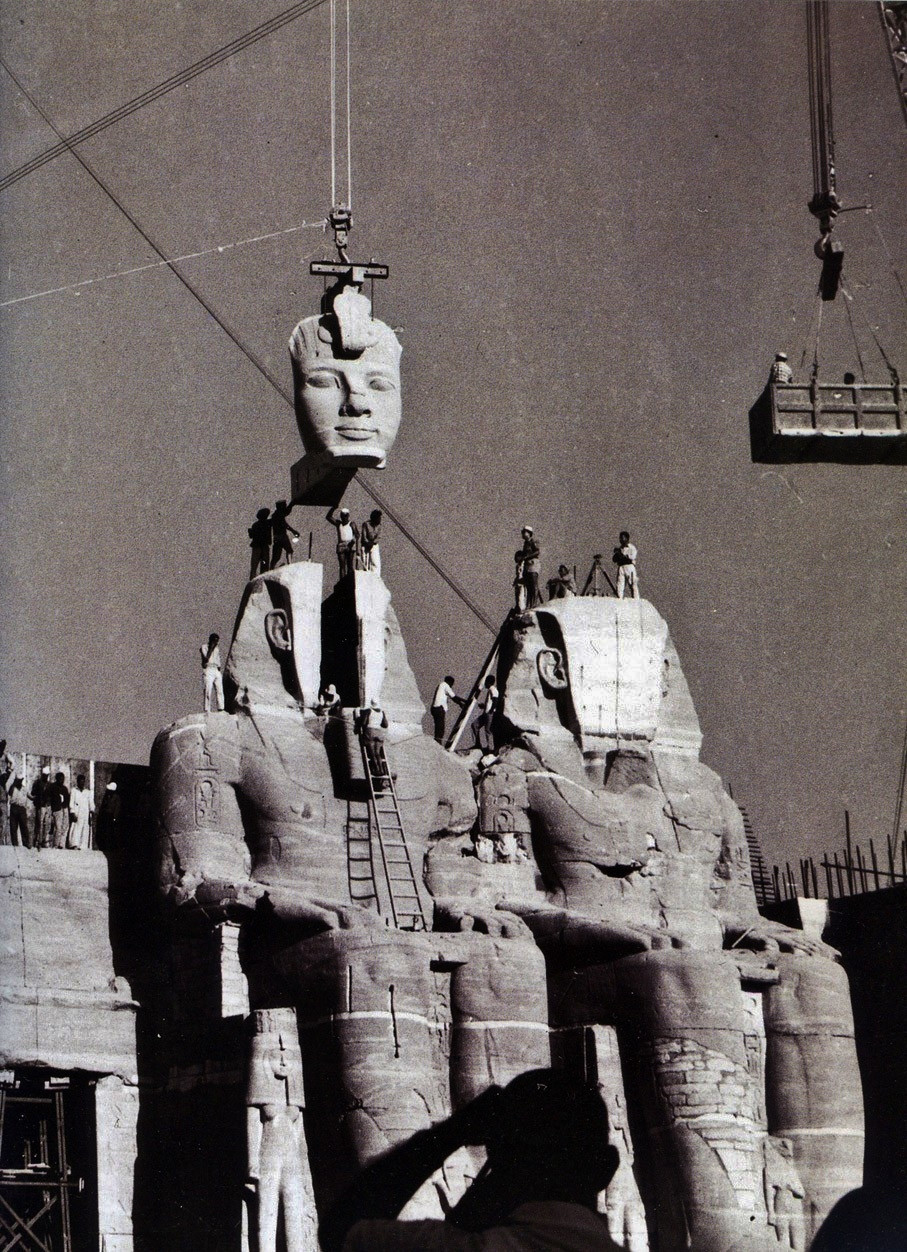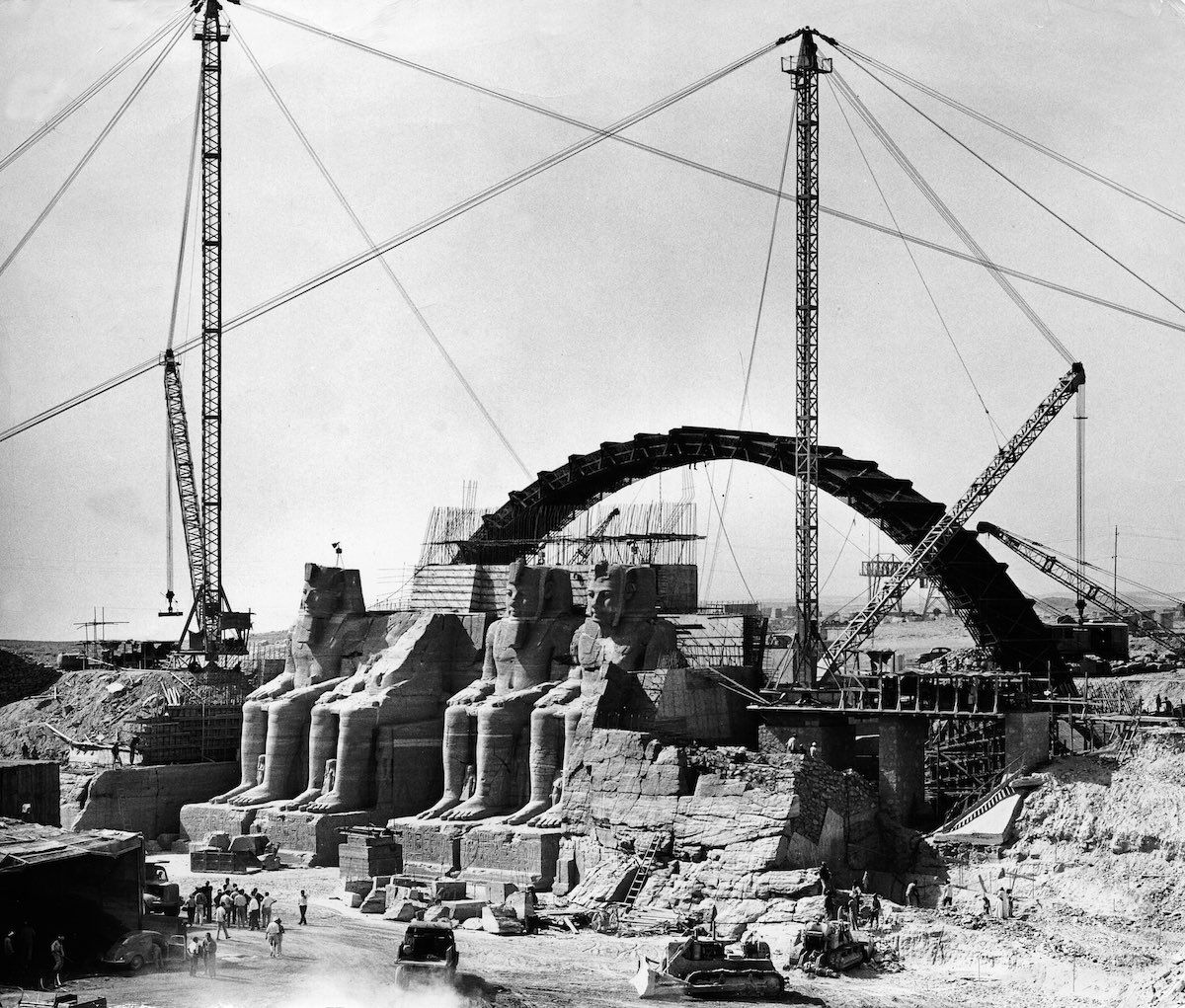
The Abu Simbel temple is one of the most well-known ancient sites in Egypt. It survived the ancient times and was located on the west bank of the Nile River for 3,000 years. However, modern progress shifted its location when the Aswan High Dam required it to be dismantled and rebuilt on a higher hill in the 1960s.
Abu Simbel is an ancient temple complex. It contains two temples that were built between 1264 – 1244 BCE or 1244 – 1224 BCE during the reign of Ramesses II. The Abu Simbel Temple was constructed by Ancient Egyptian King Ramesses II, with the main intention to celebrate the victory during the Hitties at Kadish battle in 1274 B.C.
Of the two temples, there is the Great Temple and the Small Temple. The Great Temple is 98 feet tall and depicts Ramesses II on his throne, with four seated colossi at 65 feet tall. Beneath, there are status of the Nubians, Libyans and Hittites, all enemies that Ramesses conquered. On the walls, there are writings of military victories, his personal life, and Egyptian Gods, such as Ra-Horakhty, Ptah, and Amon.

Less than two hundred meters away from the Great Temple is the Small Temple. The Small Temple was constructed for Ramesses’ wife, Egyptian Queen Nefetari. It includes two statues of the queen and four of the pharaoh.
When it comes to what the Abu Simbel really means, in this interview with the online magazine We Build Value, Museo Egizio Director Christian Greco explained “The temples of Abu Simbel and more generally the entire Nubian area belong to humanity. To lose these temples would have meant erasing this extraordinary testimony of Egyptian art for everyone, even for future generations. More than a symbol of the power of the pharaohs, these temples are also an expression of the technological know-how achieved in the time of Ramesses II”.
Call to save the Temples

An emergency call to action to save the temples from the rising waters of the Nile River was first launched in 1959.
In 1964, three months after the first dam construction stage of the Aswan Dam was completed, UNESCO launched its appeal in order to save the priceless temples that were threatened to be submerged. It took just over three years to relocate the two temples from their original site to their new home further up on a higher hill.
It was a three-part undertaking to save the temples, including: protecting the site, cutting and dismantling, and reconstruction. The saving of the temples was a great example of international cooperation, as dozens of countries responded to the UNESCO’s appeal.
The Italian archaeological community, for example, explored and recorded areas that risked being submerged. The support of the other countries coming together to preserve cultural treasures is remembered as a teaming up together for engineering achievement.
As Director of the UNESCO Regional Bureau for Science and Culture in Europe, Ana Luiza, said, the Abu Simbel temple rescue was the “international campaign that revolutionized the approach to world heritage protection” because it demonstrated that culture and development can both be values that humanity cherishes.
Main image courtesy of REITZ/ULLSTEIN BILD via Getty Images.







Comments (3)
[…] thought to be of Nubian origin and meaning the “the temple on the island of the past,” like Abu Simbel, garnered international attention and adoration in the 1960s when a campaign was launched by UNESCO […]
[…] thought to be of Nubian origin and meaning the “the temple on the island of the past,” like Abu Simbel, garnered international attention and adoration in the 1960s when a campaign was launched by UNESCO […]